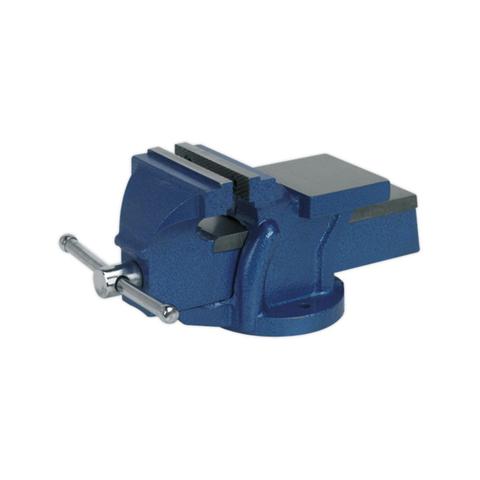
When working alone you may find that a helping hand is needed from time to time, which is where a workbench vice comes in handy. A solid bench vice holds a workpiece still to help you make smoother saw cuts and more steady plane strokes, and even get your sanding done faster.
There are many different types of workbench vice, so if you are wondering which is the best for you then keep reading.
Table of Contents
Main types of workbench vice
Generally speaking, there are two main types of workbench vice: a front vice and an end vice.
A front vice is usually positioned on the left side of the long edge of the workbench. It is the best option for tasks that require a solid hold on the workpiece, and for both of your hands to be free. This could include holding a board edge-side up horizontally for easy sanding.
An end vice is attached to the bottom of a workbench and its main job is to hold material flat on the surface of the bench, so the material you are working on is held securely.
Woodworking vice
These are one of the most common vices, used by woodworkers to hold workpieces as they work on them with other tools, they come in many styles.
Pipe vice
This holds a piece of pipe or tube securely so that it can be cut or threaded. It is most commonly used as a plumbing tool or apparatus in the assembly of components for pipelines.
Vacuum vice
This type can swivel up to 360 degrees and can lock at any preferred angle, which is ideal when detailing work on wood/metal down to a smooth surface. It comes equipped with a suction mount for easy securing onto a workbench.
Metalworking vice
This type of vice has two parallel iron jaws with a wide opening base. The metal jaws are used to hold down a workpiece. Also known as an engineer’s vice, it is made with a thick metal body for extra strength and durability.
Chain vice
A chain pipe vice works well with irregularly shaped pipes or other objects. It consists of a high-tensile steel chain that holds the piece of pipe being worked. This type of vice may take longer to set up than other types. This is because the chain must be carefully threaded between the jaws of the tool to clamp the pipe firmly in place.
What factors should I consider before buying a workbench vice?
Throat depth
This is the distance from the top side of the jaw to the top of the slide below the jaw. The larger the throat depth on a vice, the larger the workpiece it can hold.
Jaw width
This is a measurement of how far the mouth of the jaws can open. It is measured by the horizontal distance along the jaw edge and, again, the larger the width the bigger the workpiece it can hold.
Construction
No two vices are the same and even if some models look similar, you may find that one is heavier than the others. If you need a durable vice you should invest in one that is well-constructed from heavy-duty steel.
Hello, I am a professional writer and blogger at Adclays.com. I love to explore the latest topics and write on those topics. I spend the maximum of my time on reading and writing interesting topics which provide valuable piece of information to my readers whether it comes to the latest fashion, technology, healthy lifestyle, business information, etc. Explore my writings by visiting the website.